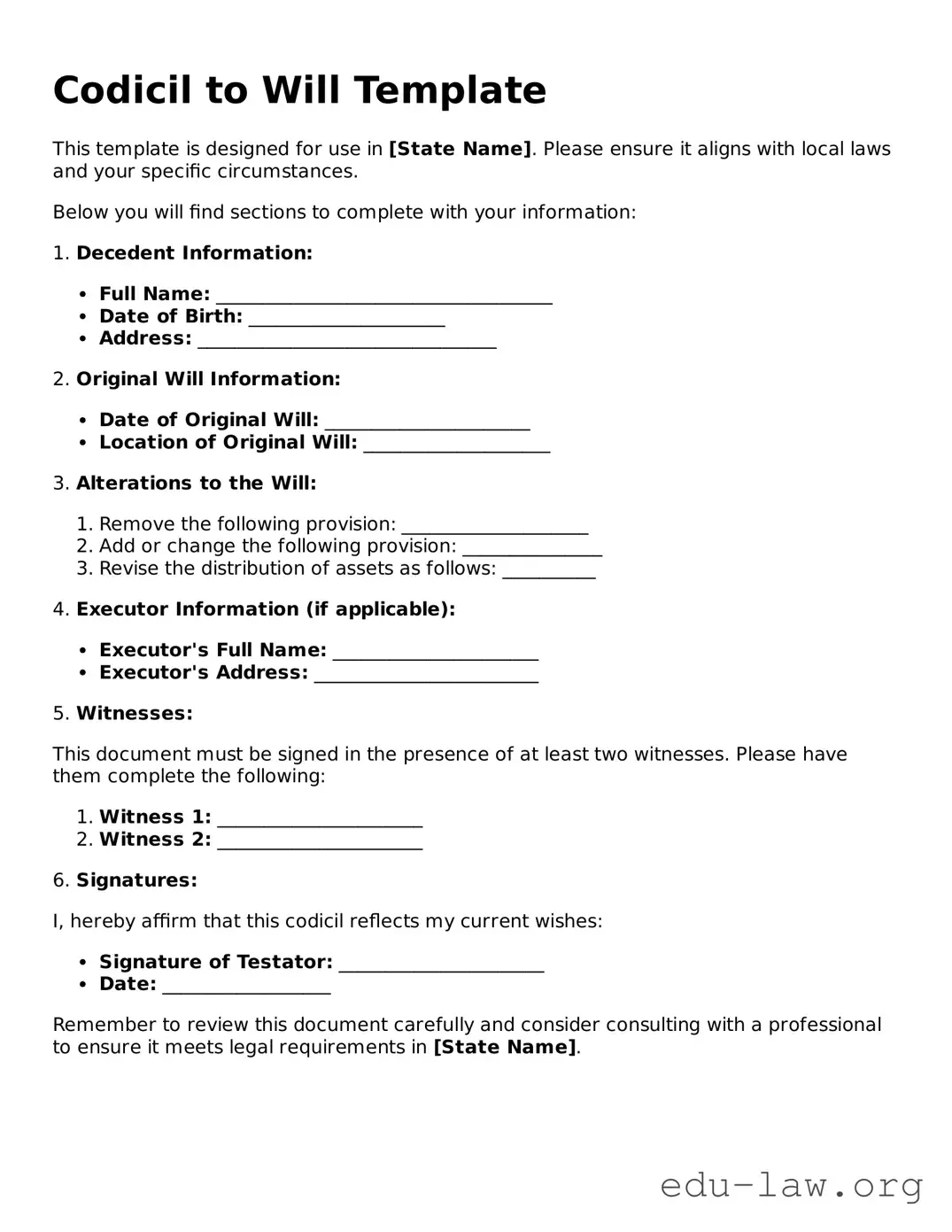What is a codicil to a will?
A codicil is a legal document that allows you to make changes to an existing will without having to create an entirely new document. It is typically used to add, modify, or revoke specific provisions in your will. A codicil must be signed and witnessed in the same manner as a will to be considered valid.
When should I use a codicil instead of a new will?
If you only need to make small changes—like updating a beneficiary's name or changing an executor—a codicil may be appropriate. However, if you are making significant changes or if your circumstances have dramatically changed, consider creating a new will to ensure everything is clearly laid out.
How do I create a codicil?
To create a codicil, you need to clearly outline the changes you want to make. Start by referencing your original will and identifying which sections you wish to amend. Then, sign and date the codicil, and have it witnessed according to your state’s laws to ensure it is legally binding.
Can I make changes to any part of my will with a codicil?
Yes, you can modify almost any part of your will using a codicil, including changing beneficiaries, altering asset distribution, or appointing a new executor. However, ensure that the changes do not conflict with existing provisions in your will, as this can create confusion.
Do I need to notify beneficiaries about the codicil?
While you are not legally required to inform beneficiaries about a codicil, it is often a wise decision to communicate any changes, especially if they affect them. Keeping your beneficiaries informed can prevent misunderstandings and disputes after your passing.
What if my original will was revoked? Can I still use a codicil?
If your original will has been revoked, a codicil cannot be used to make changes to that will. Instead, you will need to create a new will. Ensure that all previous versions of your will are destroyed or clearly revoked to avoid confusion regarding your intentions.
Is there a specific format I must follow for a codicil?
The format for a codicil does not have to be overly complicated. It typically includes the date, your name, a statement indicating it is a codicil, references to the original will, and details on the changes being made. It should also include your signature and the signatures of witnesses.
Can a codicil be challenged in court?
Yes, like any legal document, a codicil can be challenged in court. Common grounds for disputes include questions about the testator's mental capacity at the time of signing or claims that the codicil was not properly executed. To minimize the risk of challenges, it's important to follow legal requirements closely when creating a codicil.
